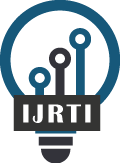|
International Journal for Research Trends and Innovation
International Peer Reviewed & Refereed Journals, Open Access Journal
ISSN Approved Journal No: 2456-3315 | Impact factor: 8.14 | ESTD Year: 2016
Scholarly open access journals, Peer-reviewed, and Refereed Journals, Impact factor 8.14 (Calculate by google scholar and Semantic Scholar | AI-Powered Research Tool) , Multidisciplinary, Monthly, Indexing in all major database & Metadata, Citation Generator, Digital Object Identifier(DOI)
|
Issue: December 2025
Volume 10 | Issue 12
Review Result and Publication of Paper within : 2-3 days
Click Here For more DetailsFor Authors
Forms / Download
Published Issue Details
Editorial Board
Other IMP Links
Facts & Figure
Impact Factor : 8.14
Issue per Year : 12
Volume Published : 10
Issue Published : 115
Article Submitted : 19688
Article Published : 8087
Total Authors : 21392
Total Reviewer : 770
Total Countries : 147
Indexing Partner
Licence
This work is licensed under a Creative Commons Attribution-NonCommercial 4.0 International License







|
Published Paper Details
|
|
| Paper Title: | Low-Power Ultra-Wideband Low Noise Amplifier Employing Forward Body Bias and Current-Reuse for Wireless Sensor Networks Applications |
| Authors Name: | Chandrasekhar Kandagatla , Dr. Prabhu G. Benakop |
| Download E-Certificate: | Download |
| Author Reg. ID: |
IJRTI_181676
|
| Published Paper Id: | IJRTI2109021 |
| Published In: | Volume 6 Issue 9, September-2021 |
| DOI: | |
| Abstract: | Wireless communication is a critical necessity for biomedical applications, and it has recently sparked a lot of research attention. Low-power receivers are required for such applications, while nevertheless allowing for acceptable communication range and coexistence with other receivers operating in the same frequency band. In wireless sensor network nodes, RF modules account for the majority of power usage. The basis of an RF module is a transceiver. Several methods for lowering the receiver's power consumption have lately been published. The RF local oscillator and RF low noise amplifiers, for example, are the most power-hungry blocks in the whole circuit. The RX power can be greatly decreased to the nanowatt level by using an all-passive RF front-end. We propose to use two stage CS amplifier with a Forward Body Bias (FBB) technique in order to reduce the threshold voltage of MOSFET, and hence, lowering the DC power. We use this method along with the CS–CD current reuse approach. The circuit has two stages: a common-source topology to compensate for the gain of the first stage (M2), and a source-follower (common-drain) topology as a buffer stage to avoid adding a third stage (M3) and improve output return loss. Using this proposed combination approach, we were able to achieve a considerable improvement in the frequency range of 2–11 GHz, according to our experimental results. In a wide frequency range, from 4 to 10 GHz, this improvement includes a lowest noise figure of 2.5 dB, a maximum noise figure of 4.2 dB, and an average noise figure of less than 3 db. |
| Keywords: | Wireless, sensor nodes, Receiver |
| Cite Article: | "Low-Power Ultra-Wideband Low Noise Amplifier Employing Forward Body Bias and Current-Reuse for Wireless Sensor Networks Applications", International Journal of Science & Engineering Development Research (www.ijrti.org), ISSN:2455-2631, Vol.6, Issue 9, page no.137 - 150, September-2021, Available :http://www.ijrti.org/papers/IJRTI2109021.pdf |
| Downloads: | 000205246 |
| ISSN: |
2456-3315 | IMPACT FACTOR: 8.14 Calculated By Google Scholar| ESTD YEAR: 2016 An International Scholarly Open Access Journal, Peer-Reviewed, Refereed Journal Impact Factor 8.14 Calculate by Google Scholar and Semantic Scholar | AI-Powered Research Tool, Multidisciplinary, Monthly, Multilanguage Journal Indexing in All Major Database & Metadata, Citation Generator |
| Publication Details: |
Published Paper ID: IJRTI2109021
Registration ID:181676
Published In: Volume 6 Issue 9, September-2021
DOI (Digital Object Identifier):
Page No: 137 - 150 Country: -, -, - Research Area: Engineering Publisher : IJ Publication Published Paper URL : https://www.ijrti.org/viewpaperforall?paper=IJRTI2109021 Published Paper PDF: https://www.ijrti.org/papers/IJRTI2109021 |
| Share Article: | |
|
Click Here to Download This Article |
|
| Article Preview | |
|
|
|
Major Indexing from www.ijrti.org
| Google Scholar | ResearcherID Thomson Reuters | Mendeley : reference manager | Academia.edu |
| arXiv.org : cornell university library | Research Gate | CiteSeerX | DOAJ : Directory of Open Access Journals |
| DRJI | Index Copernicus International | Scribd | DocStoc |
ISSN Details
 |
 |
ISSN: 2456-3315
Impact Factor: 8.14 and ISSN APPROVED,
Journal Starting Year (ESTD) : 2016
DOI (A digital object identifier)
 Providing A digital object identifier by DOI.ONE How to Get DOI? |
Conference
Open Access License Policy
Important Details
Join RMS/Earn 300
WhatsApp
Click Here
Click Here
Indexing Partner |
|||
| Copyright © 2025 - All Rights Reserved - IJRTI | |||






